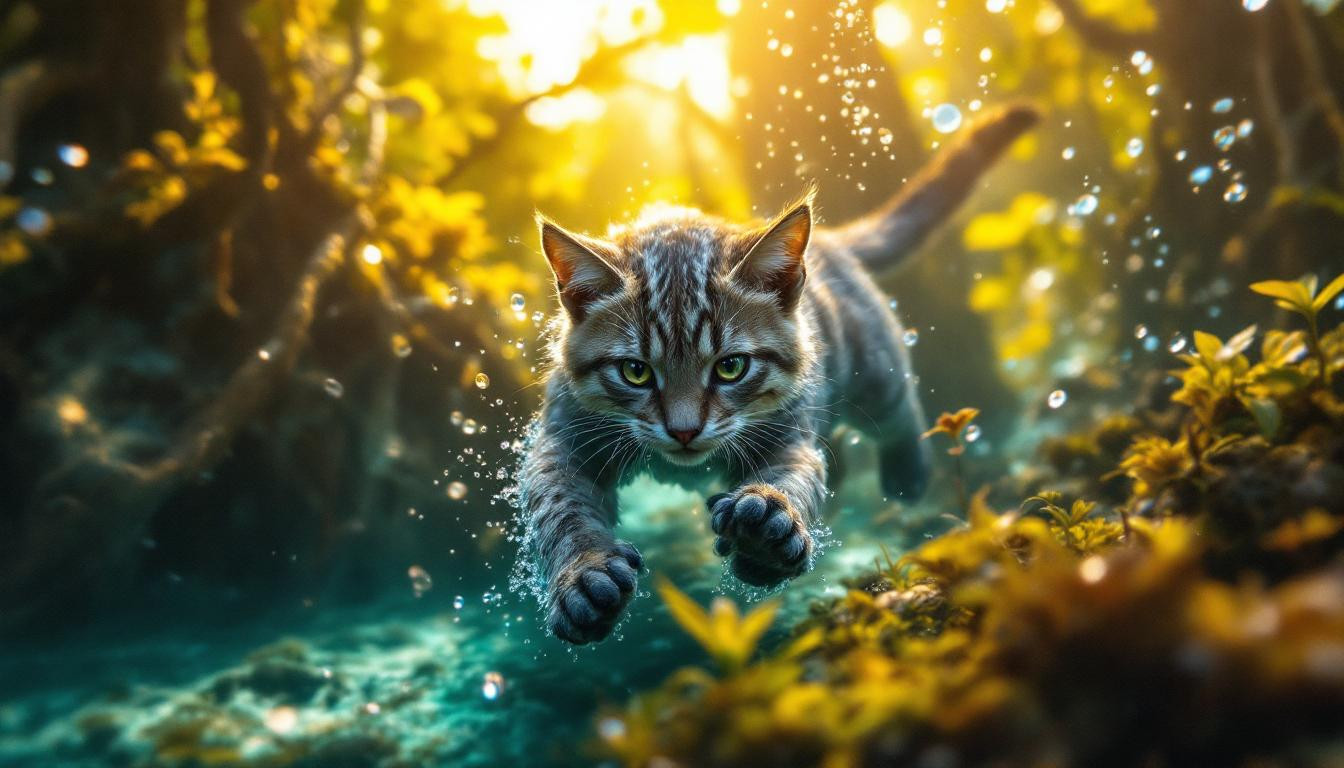Venture into the world of one of nature’s most remarkable felines as we explore a creature that defies traditional cat stereotypes. With spring waters beginning to rise across wetlands this April, there’s no better time to discover the fishing cat – a fascinating wild cat that swims underwater, barks like a dog, and has webbed feet.
Nature’s swimming feline: A unique evolutionary marvel
Unlike typical house cats that avoid water at all costs, fishing cats dive headfirst into aquatic environments. These medium-sized wild cats have evolved specialized adaptations that make them exceptional swimmers, including partially webbed feet that work like natural flippers.
“Fishing cats show remarkable adaptability to aquatic environments, representing a unique position in feline evolution,” explains Dr. Jim Sanderson, small cat conservation specialist. “Their partially webbed forepaws give them the paddle-like efficiency that most cats simply don’t possess.”
These aquatic hunters are roughly twice the size of domestic cats, weighing between 5-16 kg with bodies specially designed for a semi-aquatic lifestyle – similar to how specialized creatures thrive in extreme environments.
The cat that barks: Unusual vocalizations
Perhaps the most surprising characteristic of fishing cats is their vocalization. Rather than typical meows, these remarkable felines produce dog-like barking sounds that echo across their wetland habitats.
“The unique vocalizations of fishing cats reflect their evolutionary history and suggest a complex communication system,” notes wildlife biologist Dr. Anya Ratnayaka. “These bark-like calls can be heard especially during breeding season, which typically begins in early spring.”
Masters of aquatic hunting
Fishing cats demonstrate hunting intelligence that rivals the strategic adaptations seen in Darwin’s living laboratory species. Their hunting techniques include:
- Diving completely underwater to catch prey
- Tapping water surfaces to mimic insects, attracting fish
- Using their powerful tail as a rudder while swimming
- Scooping fish with their partially webbed paws
Spring brings new opportunities for fishing cats
As we enter spring 2025, fishing cats are becoming particularly active. Rising water levels in wetlands create ideal hunting conditions, similar to how seasonal changes transform landscapes around the world.
“Spring is a critical period for fishing cats as water levels rise and fish become more abundant,” explains conservation biologist Dr. Tiasa Adhya. “This season offers researchers rare glimpses into their hunting behaviors when they’re most active.”
Facing extinction: The vulnerable swimmer
Despite their remarkable adaptations, fishing cats face significant threats that have earned them a Vulnerable classification on the IUCN Red List. Their population continues to decline due to:
- Wetland destruction for agriculture and development
- Water pollution affecting prey availability
- Retaliatory killings by fish farmers
- Habitat fragmentation due to urbanization
Conservation efforts gaining momentum
Conservation initiatives are increasingly focusing on protecting these unique cats. Much like travelers seeking solutions to travel challenges, conservationists are developing innovative approaches to fishing cat protection.
Community-based conservation programs are showing promise, particularly in India and Sri Lanka where fishing cats maintain stronghold populations. These efforts mirror successful conservation models seen in lesser-known but equally valuable locations around the world.
How can we help these underwater cats?
The fishing cat serves as a wetland ambassador, highlighting the importance of preserving these vital ecosystems. Their presence indicates healthy wetland environments that benefit countless other species.
What if we could ensure these remarkable swimming cats continue to thrive for generations to come? By supporting wetland conservation and raising awareness about these unique felines, we can help secure their future. After all, a world without fishing cats would lose one of nature’s most extraordinary evolutionary wonders.
